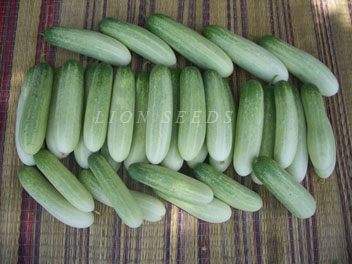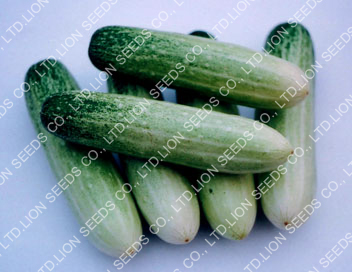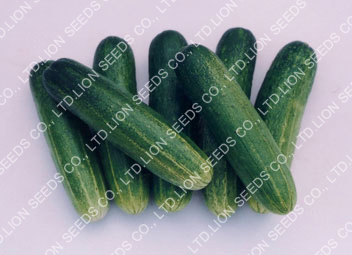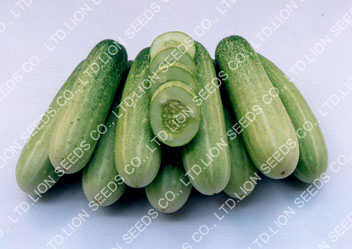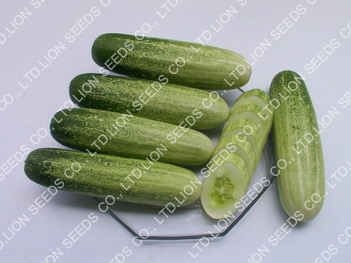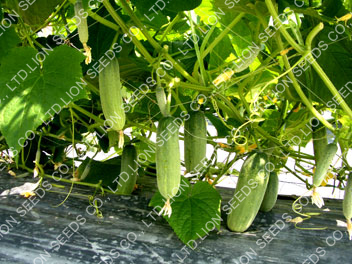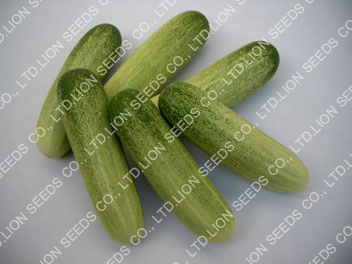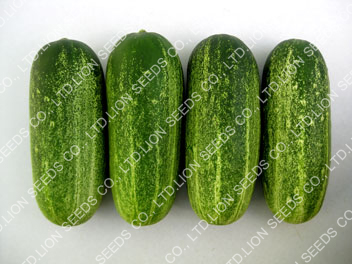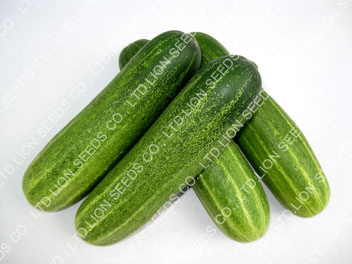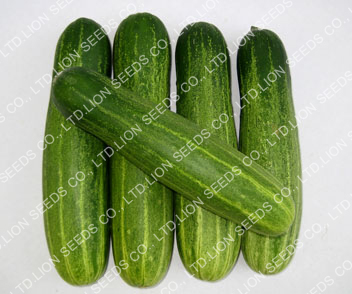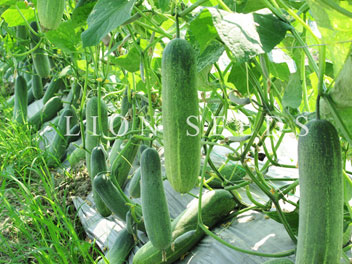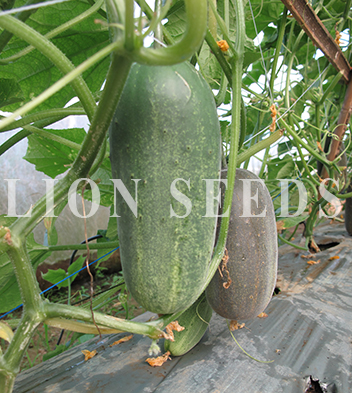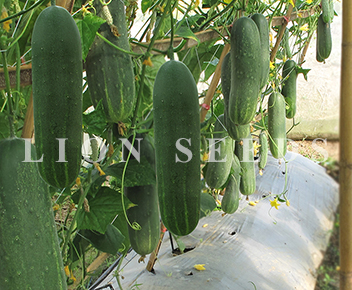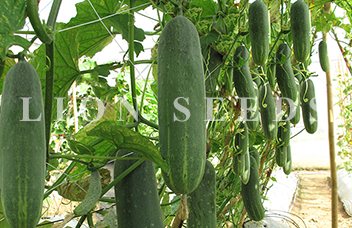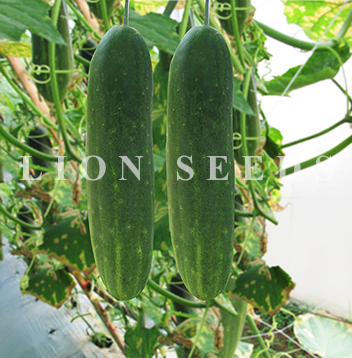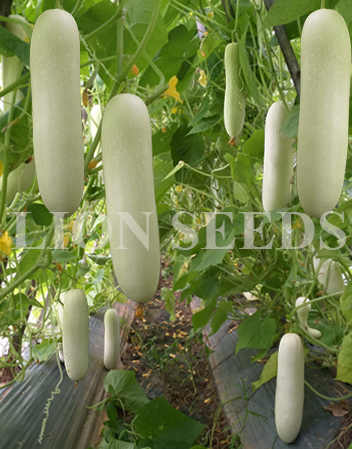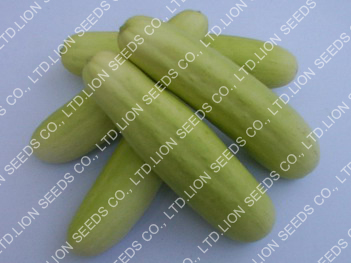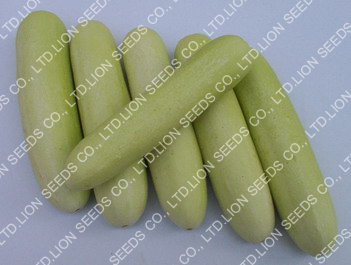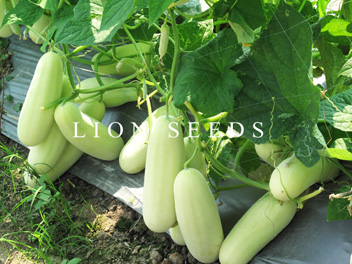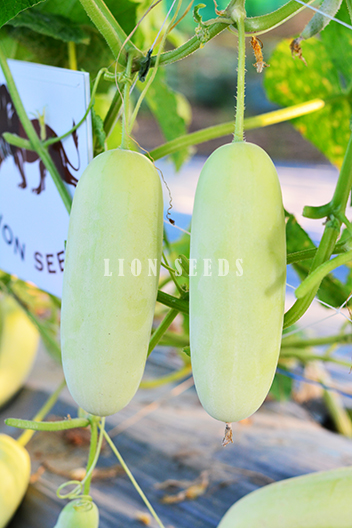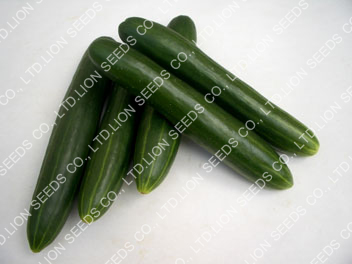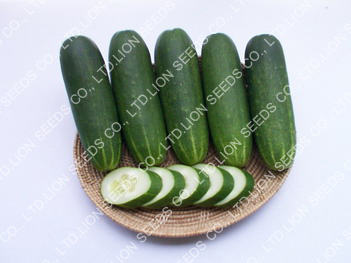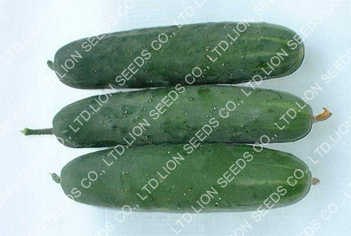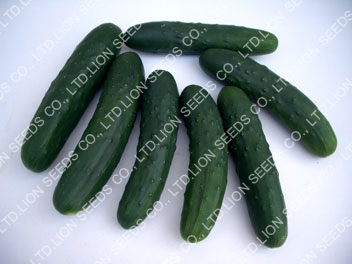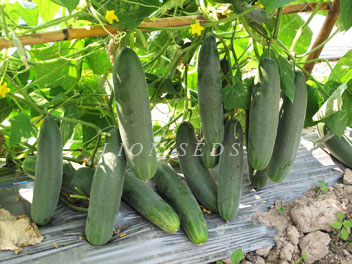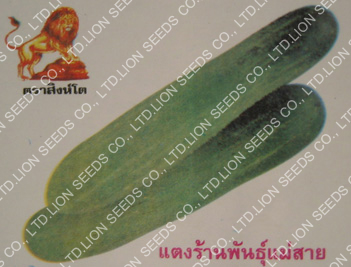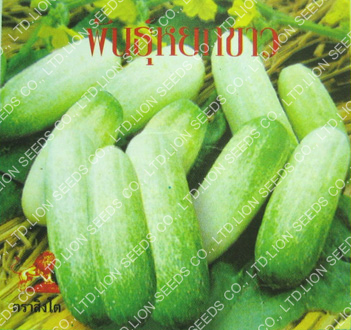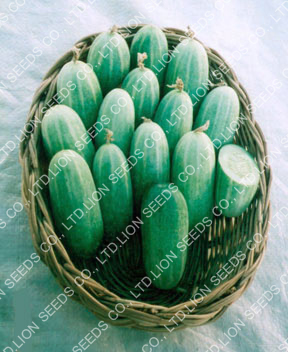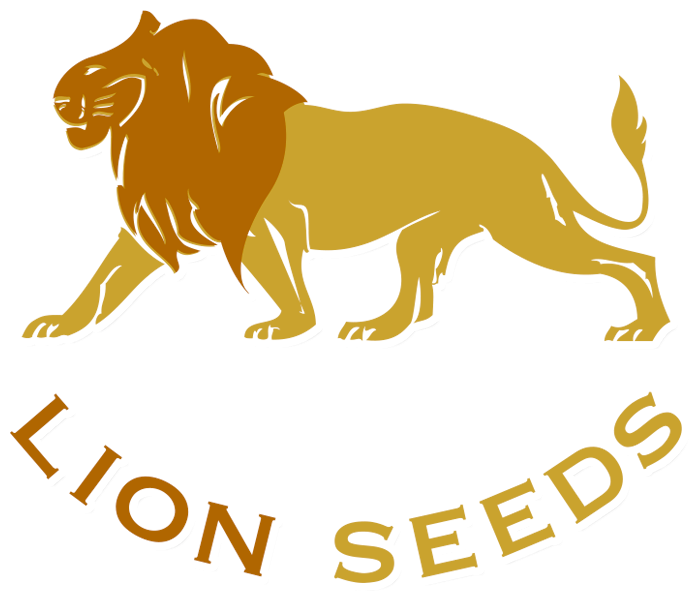Tropical Type
Japanese Type
Slicing Type
Other Types

The cucumber is the edible fruit of the cucumber plant Cucumis sativus, which belongs to the gourd family Cucurbitaceae, as do melons and squash. The plant has been cultivated for 3000 years and is widely cultivated today. The cucumber plant has large leaves that form a canopy over the fruit. The vine is grown on the ground or on trellises, often in greenhouses.
The fruit is commonly harvested while still green, and eaten as a vegetable, whether raw, cooked, or made into pickled cucumbers. Although less nutritious than most fruit, the fresh cucumber is still a very good source of vitamin C, vitamin K, and potassium, and also provides some dietary fiber, vitamin A, vitamin B6, thiamin, folate, pantothenic acid, magnesium, phosphorus, potassium, copper, and manganese. The pickling process removes or degrades much of the nutrient content, especially that of vitamin C.
Cucumbers are usually green-skinned, roughly cylindrical, elongated, with tapered ends, and may be as large as 30 cm long and 5 cm in diameter.

